


Jennie Gorden spoke about the life of Sacagawea, a Shoshone Indian woman who was a guide for the Lewis and Clark Expedition. Jennie did a lot of research and writing on this topic and made a great presentation about an important yet little known person in our history. Without the help of Sacagawea, it is doubtful that the expedition would have succeeded as well. Lewis and Clark were sent by President Thomas Jefferson to explore the vast Louisiana Territory which America had just acquired from France. Sacagawea became a hero in the women's suffrage movement and a role-model. Statues were eventually built to her. Jennie and Dwana helped create IWD at SVDP-ALC and deserve special recognition. (Note: On Jennie's artwork -- which she displayed at her presentation- are several photos, L-R, top down: Statue of Sacagawea, Sacagawea and her baby, Lewis and Clark Expidition on the river, Sacagawea Monument in S. Dakota, and her grave stone in Wyoming.)
--Adrian
Below is Jennie's speech in her own words:
Sacagawea
By Jennie Gorden
Welcome Everyone
My name is Jennie Gorden, I am a student at St Vincent de Paul-Adult Learning Center. Today my topic will be on a Shoshone Indian name Sacagawea who was born in Lemhi County, Idaho in 1788.
I was reading my language book and found the word Sacagawea..I was interested in learning more about her background and life.
Sacagawea was a Shoshone Indian woman who was born in 1788 in the city of Salmon in Lemhi County,Idaho.She was an Indian who was captured and sold to another tribe at the age of twelve. At the age of thirteen Sacagawea became the wife of a french trapper name Char-bon-no.Shortly after becoming his wife Sacagawea became pregnant with her first child then she join the Lewis and Clark Expedition.
Sacagawea and her husband was asked to attend the expedition westward around 1804-1806.Sacagawea help Lewis and Clark obtain supplies and horses from other tribes. After learning of Sacagawea knowledge Lewis and Clark asked her to join because of her ability to speak different languages.
She was able to translate from and Indian language for the Lewis and Clark Expedition.
After joining the Expedition in November 1805, she became a valuable member who was traveling the Columbia River where they settle for the winter .The expedition voted to stay near the river what is known as the Astoria, Oregon
Sacagawea escorted the Expedition with her son Jean Baptiste on her back though the trip..Shortly Char-bon-no and Sacagawea entrusted they son to Clark care.
Later in 1810, Sacagawea gave birth to a baby girl named Lizette. In 1811,the fur dealer wrote saying that Sacagawea had become very ill and wished to revisit her Native County, again. In his journal he wrote that Sacagawea died in 1813, of a fever at the age of 25. .
In 1813, Char-bon-no, sign custody of his son over to Clark. The adoption was made final on August 11, 1813. Both of Sacagawea’s children were adopted by Clark.
Here is what I learned: I learned that Sacagawea was a Hero, Interpreter and a Peace Symbol for the Lewis and Clark Expedition that travel the Columbia River.
Sacagawea means Bird Woman and Sacajawea means Boat Launcher. International Women’s Day was the starting point of a century for women.. The story of ordinary women in 1920. The history of International Women’s Day was marked by women’s groups from around the world.
Sacagawea was a role model for those Women’s Rights Groups.
Below is Jennie's speech in her own words:
Sacagawea
By Jennie Gorden
Welcome Everyone
My name is Jennie Gorden, I am a student at St Vincent de Paul-Adult Learning Center. Today my topic will be on a Shoshone Indian name Sacagawea who was born in Lemhi County, Idaho in 1788.
I was reading my language book and found the word Sacagawea..I was interested in learning more about her background and life.
Sacagawea was a Shoshone Indian woman who was born in 1788 in the city of Salmon in Lemhi County,Idaho.She was an Indian who was captured and sold to another tribe at the age of twelve. At the age of thirteen Sacagawea became the wife of a french trapper name Char-bon-no.Shortly after becoming his wife Sacagawea became pregnant with her first child then she join the Lewis and Clark Expedition.
Sacagawea and her husband was asked to attend the expedition westward around 1804-1806.Sacagawea help Lewis and Clark obtain supplies and horses from other tribes. After learning of Sacagawea knowledge Lewis and Clark asked her to join because of her ability to speak different languages.
She was able to translate from and Indian language for the Lewis and Clark Expedition.
After joining the Expedition in November 1805, she became a valuable member who was traveling the Columbia River where they settle for the winter .The expedition voted to stay near the river what is known as the Astoria, Oregon
Sacagawea escorted the Expedition with her son Jean Baptiste on her back though the trip..Shortly Char-bon-no and Sacagawea entrusted they son to Clark care.
Later in 1810, Sacagawea gave birth to a baby girl named Lizette. In 1811,the fur dealer wrote saying that Sacagawea had become very ill and wished to revisit her Native County, again. In his journal he wrote that Sacagawea died in 1813, of a fever at the age of 25. .
In 1813, Char-bon-no, sign custody of his son over to Clark. The adoption was made final on August 11, 1813. Both of Sacagawea’s children were adopted by Clark.
Here is what I learned: I learned that Sacagawea was a Hero, Interpreter and a Peace Symbol for the Lewis and Clark Expedition that travel the Columbia River.
Sacagawea means Bird Woman and Sacajawea means Boat Launcher. International Women’s Day was the starting point of a century for women.. The story of ordinary women in 1920. The history of International Women’s Day was marked by women’s groups from around the world.
Sacagawea was a role model for those Women’s Rights Groups.

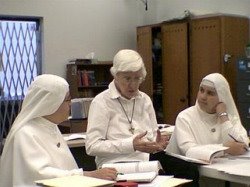




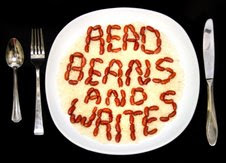




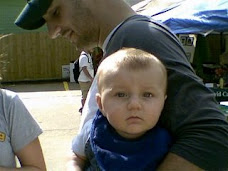





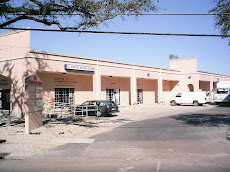



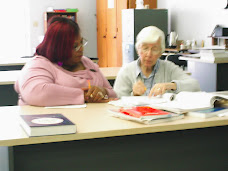
2 comments:
Jennie's story about Sacagawea teaches us that people from all walks of life can have big impact on all sorts of other people. Sacagawea became a big part of our American heritage. Thank you for sharing Sacagawea's story.
"Mr. Robert Burch,
Thank you for reading my article on Sacagawea. I am glad that you liked it. I am looking forward to publishing more articles," said Jennie Gorden
Post a Comment